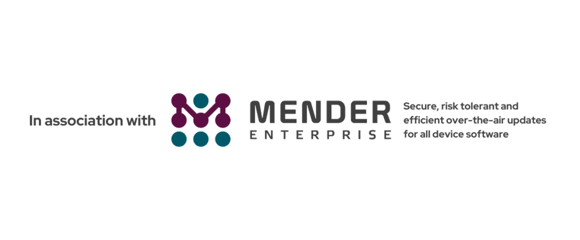The Device Chronicle spoke to Maurice Kalinowski, Product Director, Qt to learn about successful IoT product design, development and delivery in the context of HMI (Human Machine Interface).
Qt is renowned as a technology company for its design, development tools, framework and its tremendous cross-compatibility across platforms and devices. The product supports human machine interface (HMI) design, embedded Linux and RTOS-based applications in automotive, industrial automation, consumer electronics and the medical sectors.
Maurice begins by pointing out that we are now at a time when product development teams in enterprises must focus their energies on reduced time to market. They must act quickly. He says “We are way beyond the point of starting a new product or product family with HMIs and then launching 5 years down the road. The days of a “one step after another” approach and then going out to the market have come to an end. With such an outdated approach, product teams will not be able to cope with emerging competitors and the emerging trends in new technologies. “For example, look at IoT protocols. If you were to be so slow to go to the market, your ideas and included technologies would not be valid anymore. Everybody in industrial automation is settling on the machine to machine protocol OPC UA. This protocol wasn’t there a couple of years ago. Now, you see its adoption now in all kinds of devices.”
Faster to market with HMI products
Maurice provides some words of wisdom on what kinds of actions product organisations need to reduce the time to market. First of all, he says, consider the broader software lifecycle and not just development in isolation. “From a timeline perspective, development has historically been seen as the bottleneck in this process. You have an idea, then you go to the development phase and at some point you are done. The introduction of Agile, Scrum and Kanban methodologies has helped. There are lots of ideas of how to accelerate and modernise the process.” Maurice believes that today you must step back and look at all of the components in the product design, development and delivery process.Then you must bring them together. You need an all embracing process: Designers have their tools. Developers have their tools. Dev ops engineers have tools for testing. Test driven development is especially important for IoT products where there are specific regulatory requirements. Only via incorporating all those roles into one product creation team will you succeed. You must release products iteratively. Once released, you must identify whether there are new use cases. You need to understand how to support these use cases on your platform. “The waterfall has dried up. Agile has been defined for a development process, but now it should cover all aspects of your product development.”
You have an idea then you want to start with prototyping. You have designers who look at the human machine interfaces (HMIs) and create specific ideas of what will work best. Traditionally, it goes from the designer to the software developers to the testing. Once you are done with the testing, you might find that something was not done correctly and then you have to go back to square one. This linear process is being supplanted. It is being streamlined and optimised. From prototyping to testing on a device, you need to think carefully about what exact roles are needed and how they can improve the desired product at the same time.
Regulatory requirements
When developing IoT products in markets such as medical devices and connected vehicles, there are strict specifications and regulatory guidelines that you have to follow. Maurice advises “With functional safety, you need to start very early ín the thinking process, keep the theoretical guidelines in mind, and perform test-driven development as early as possible. The teams also need to figure the requirements early on and the various dependencies in relation to the OS and the middleware.” Naturally, the regulatory experts must be embedded in your process. “Regulatory professionals should be brought in early, it is implicit if you are acting as one team in an organisation, it spreads awareness across the teams if you think about this early in the design phase.”
Scalability with HMI-centered products
Product organisations are also asked to think about scalability in IoT product design. But what does this mean? In truth, Maurice says it can mean many different things depending on the domain professional involved. “From a hardware perspective, scalability means going from a low end microcontroller to an i.MX8 or up to something in the cloud. When you talk to the software developer, scalability means which features can be implemented or added within a certain timeframe? How do we get the product updated? From a web perspective scalability refers to can we put more servers, or containers, on it? Scalability for an IoT product manager is a predefined hardware set. They typically ask themselves how do you scale up for new use cases over the lifetime of the product? The days of static embedded solutions and accompanying maintenance periods are gone. We are now in an era of dynamic product families and variants. IoT product managers want to achieve longevity of products and variability and a range of products from low end to high end achieved with the same development resources.
Controlling costs of IoT projects
We also asked Maurice about the best strategies for cost control in IoT product development projects. He advises that organisations must free themselves from the “not invented here syndrome”. You must think about using componentized solutions and avoid the monolithic approach. You will want to move from upfront costs to an operational costs model so you can quickly cut the costs on projects failing, allocate small budgets on the prototypes, invest more into the POCs that are succeeding and align this approach with the overall device life cycle.
Use cases with HMI seen by Qt
Maurice and his colleagues are well positioned to the interesting use cases in IoT. He gets excited about the Human Machine Interface innovations in medical devices. He shares an example of a ventilation system with a display that can communicate with an attending nurse and the surgery. The telemetry works in the background and then you have to get this all working together across devices and platforms. Another example is Clarius Mobile Health with a super portable ultrasound device where there is no display at all, a mobile companion app is acting as the screen. “Devices are shrinking with each release and the doctor uses M2M protocols to get the images on their smartphones.”
In shipping, Qt worked on a project with Ulstein that Maurice is particularly proud of. Ulstein designs and manufactures ships and yachts and also do ship fleet management. The Qt tooling was a core asset for the design of these manufacturing processes, and in the final product in the ship themselves. “This was an exciting journey from the design phase to the physical product.” Maurice also sees a lot of exciting potential in Robotics where M2M and IoT protocols are being used to reduce the barrier to entry and where modularity is being integrated into solution design so that an industrial hammer arm can become a drill arm and a new application and business opportunity for a manufacturer.
OTA software updating and HMI products
Maurice concludes by saying that adding that robust and secure OTA software updating is now a crucial element for most types of connected products. “Without OTA software updates, you will fail. The use of SD cards for manual updates and even full image updates are going away. Updates are becoming more frequent, and the size of the updates are shrinking with the use of containers. This approach adds additional security. Mender.io is a complementary solution to the Qt tooling.”
We wish Maurice and his colleagues at Qt well on their journey to helping their customers build amazing IoT products.
Learn more about HMI and the onboarding of IoT products.

